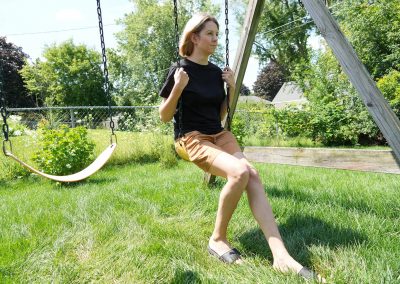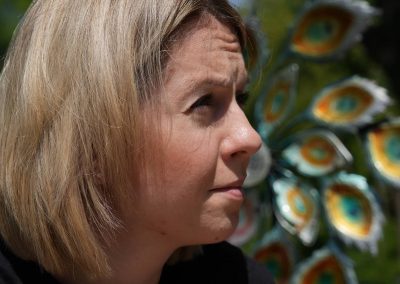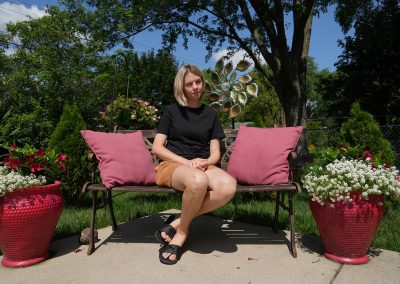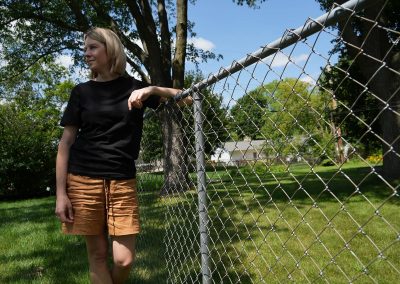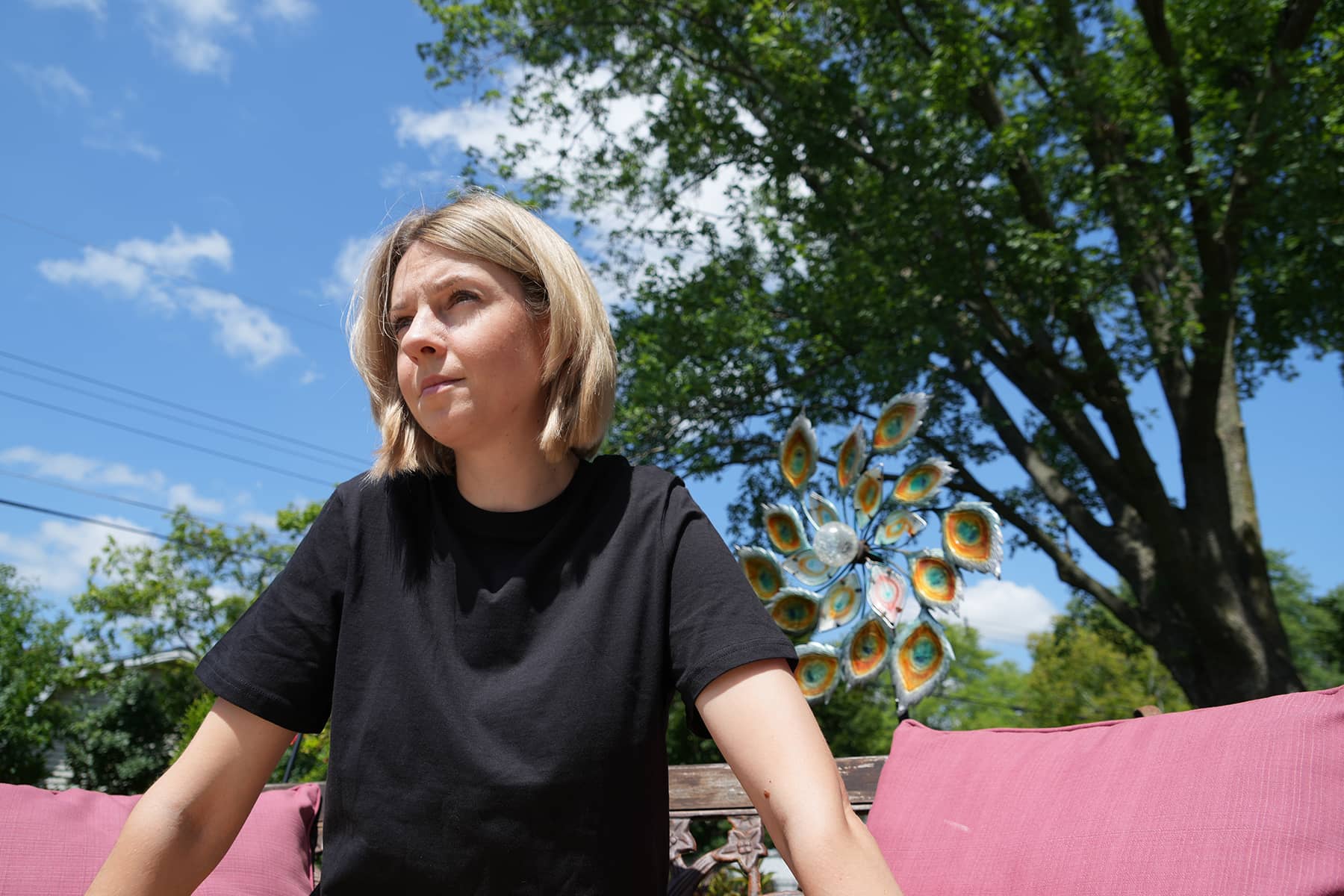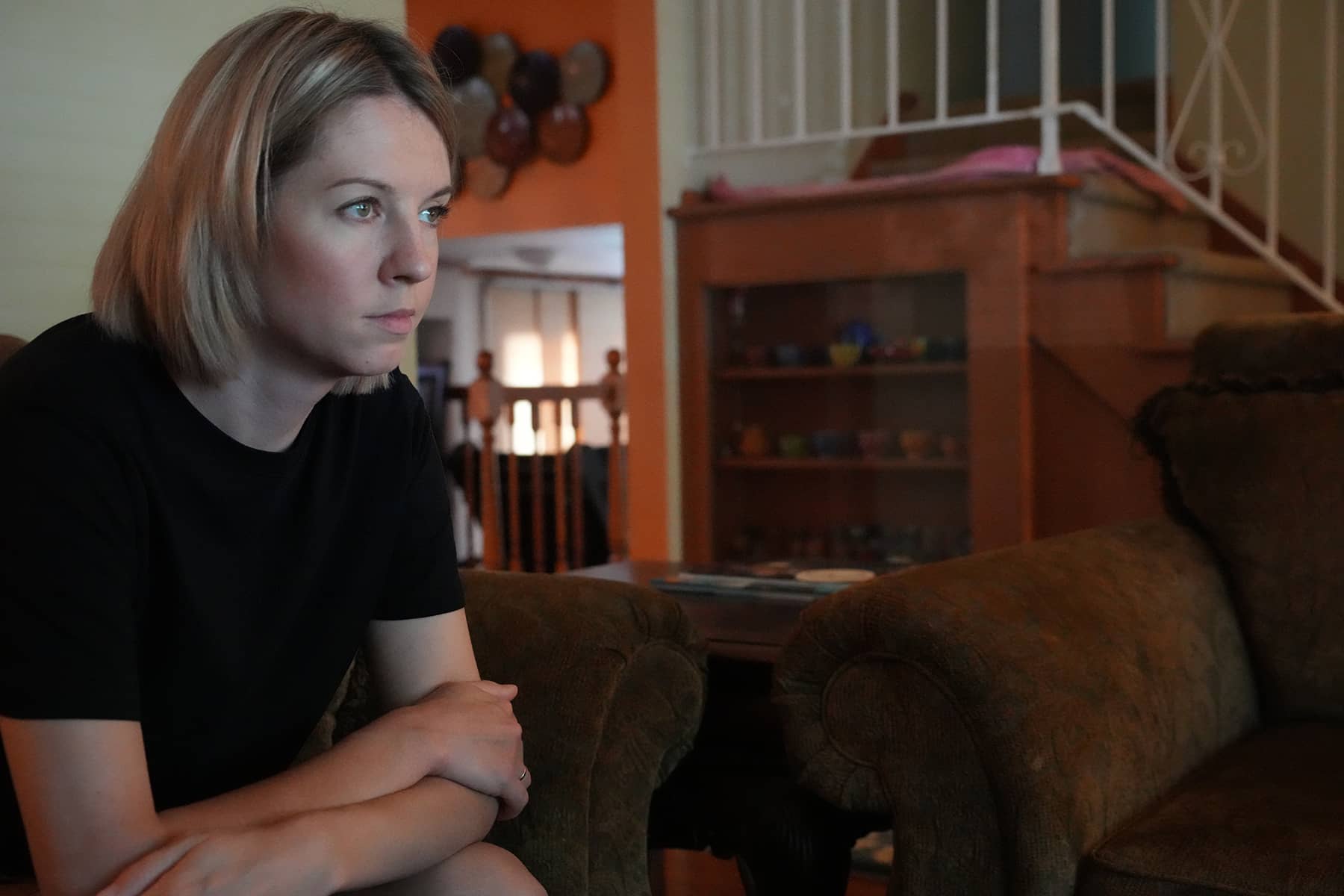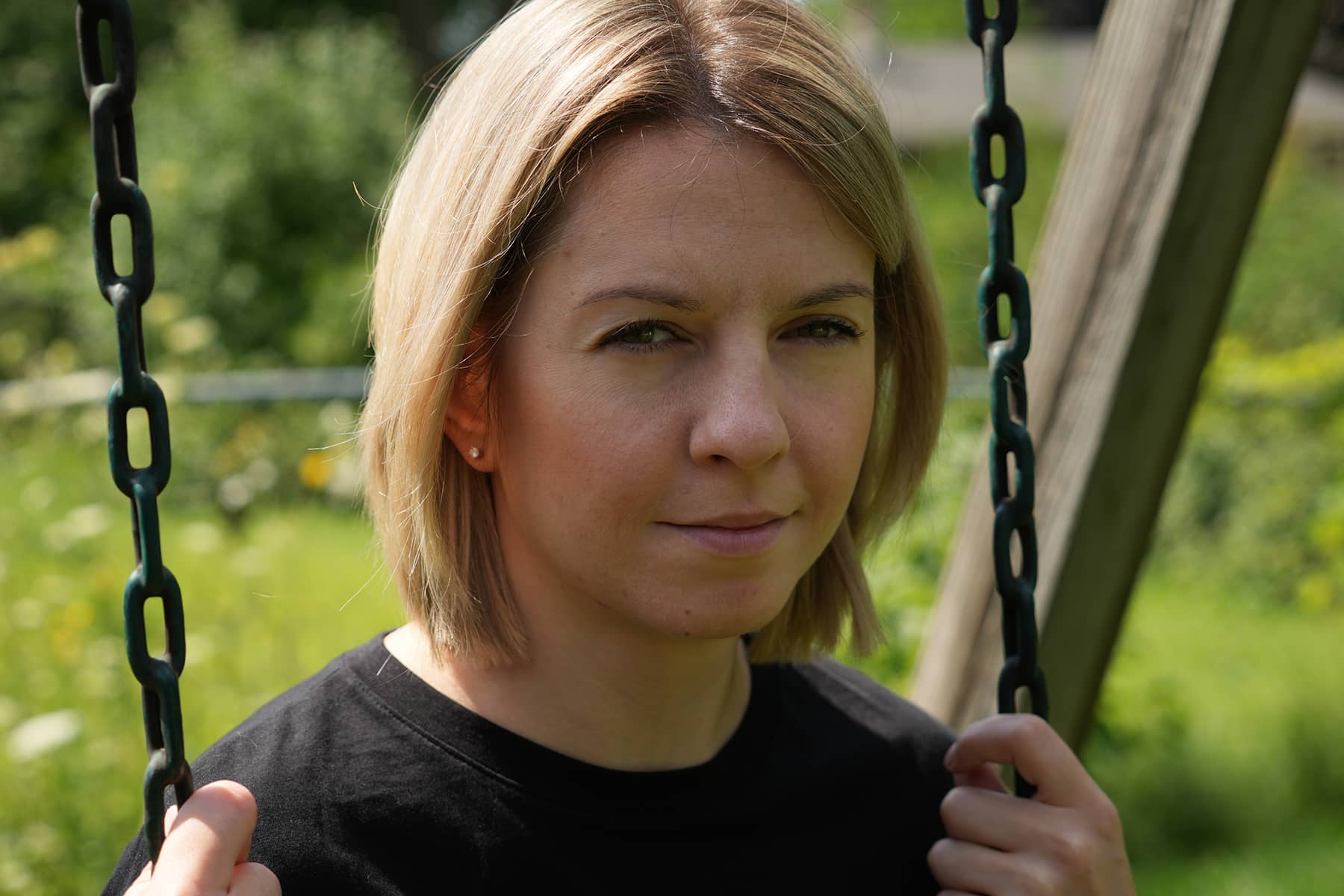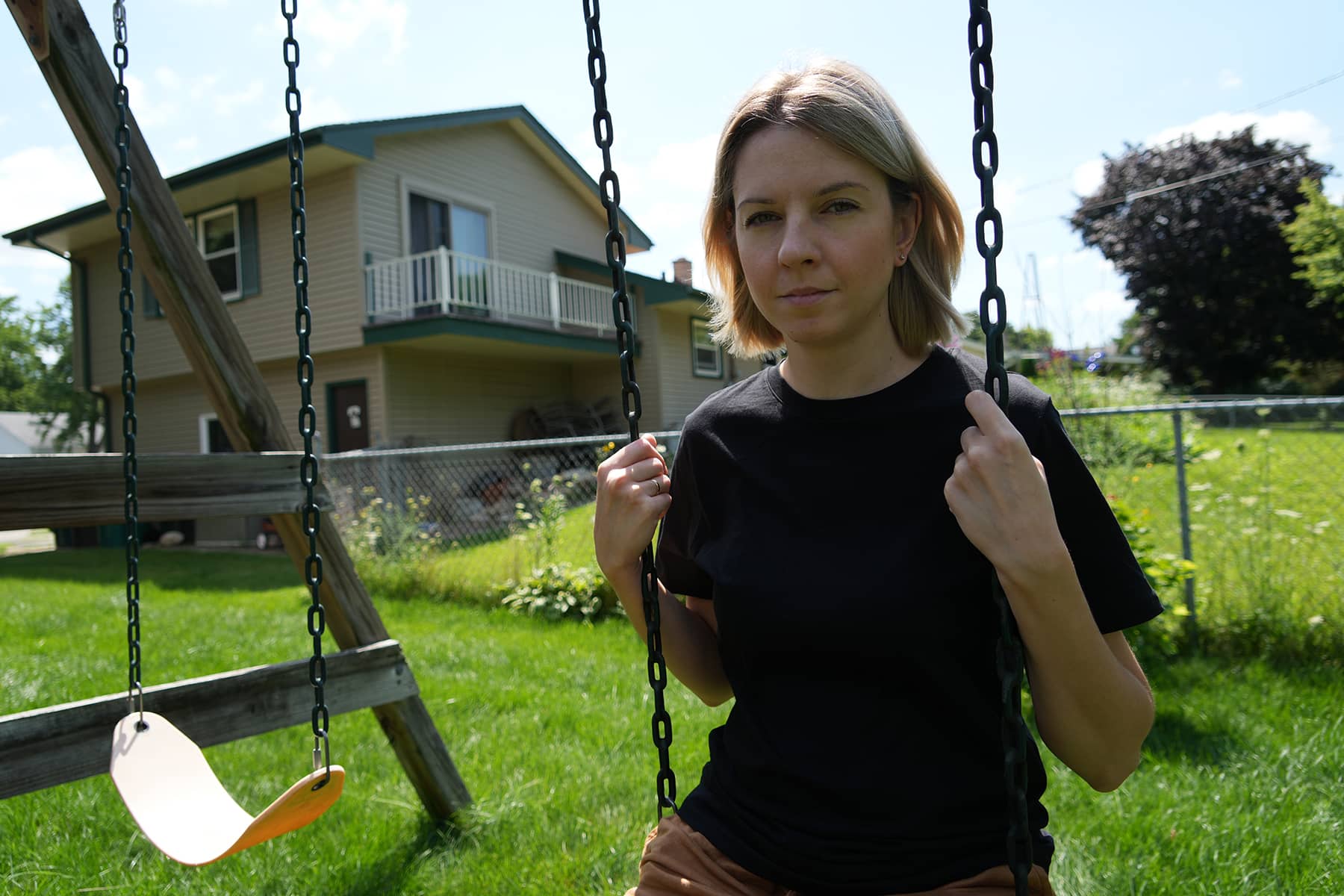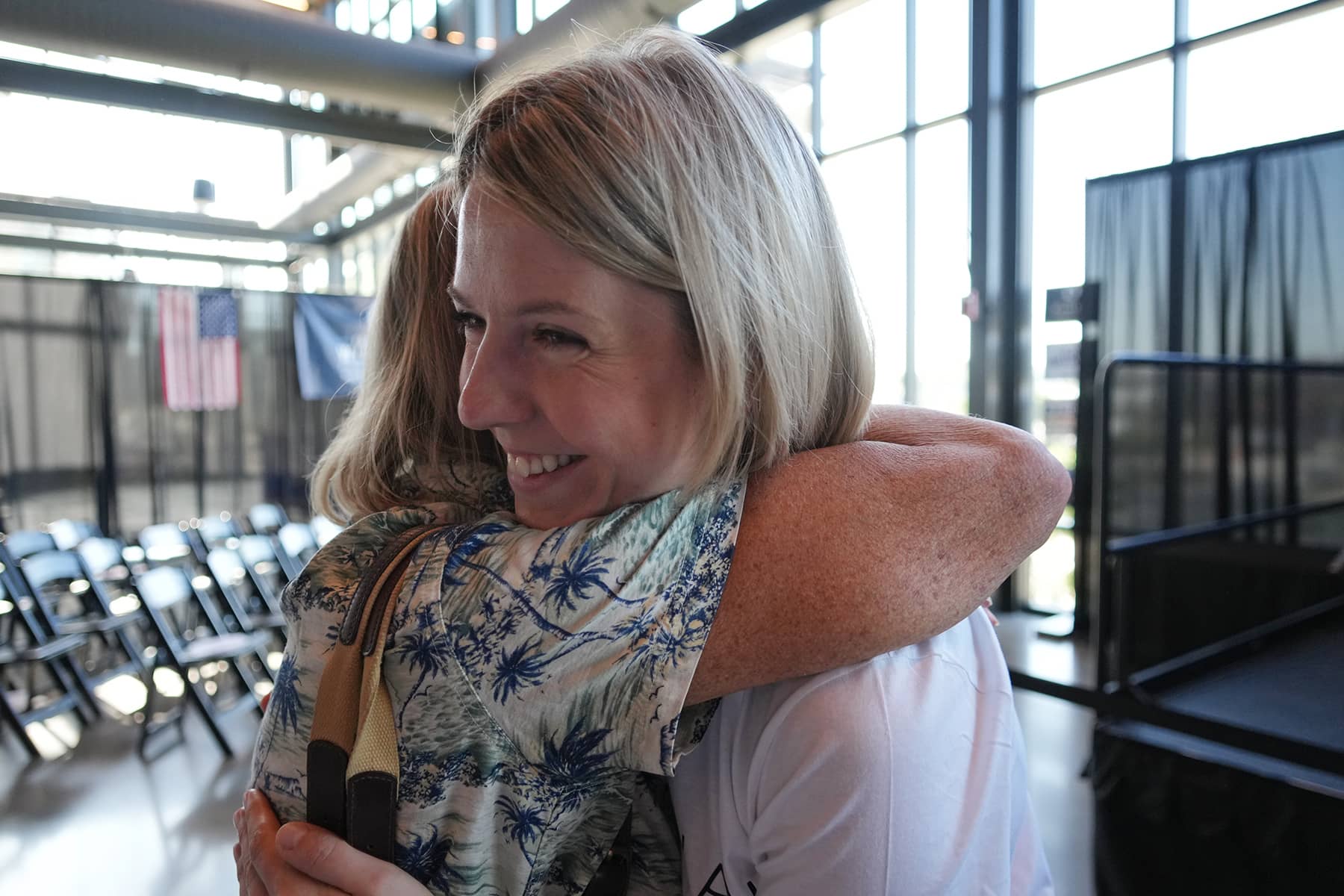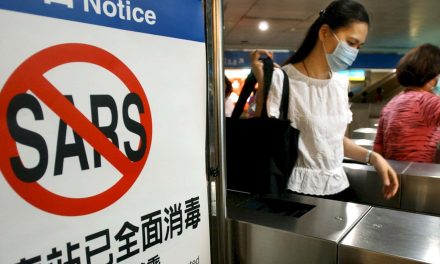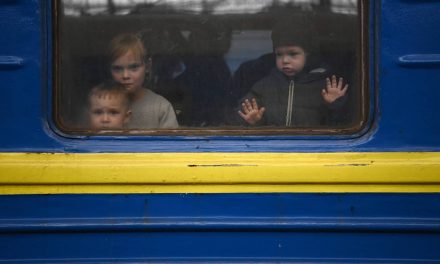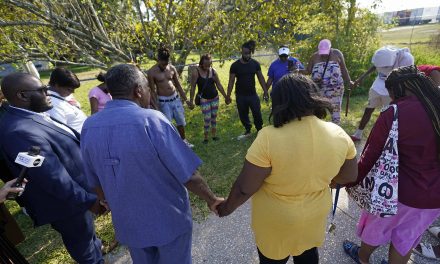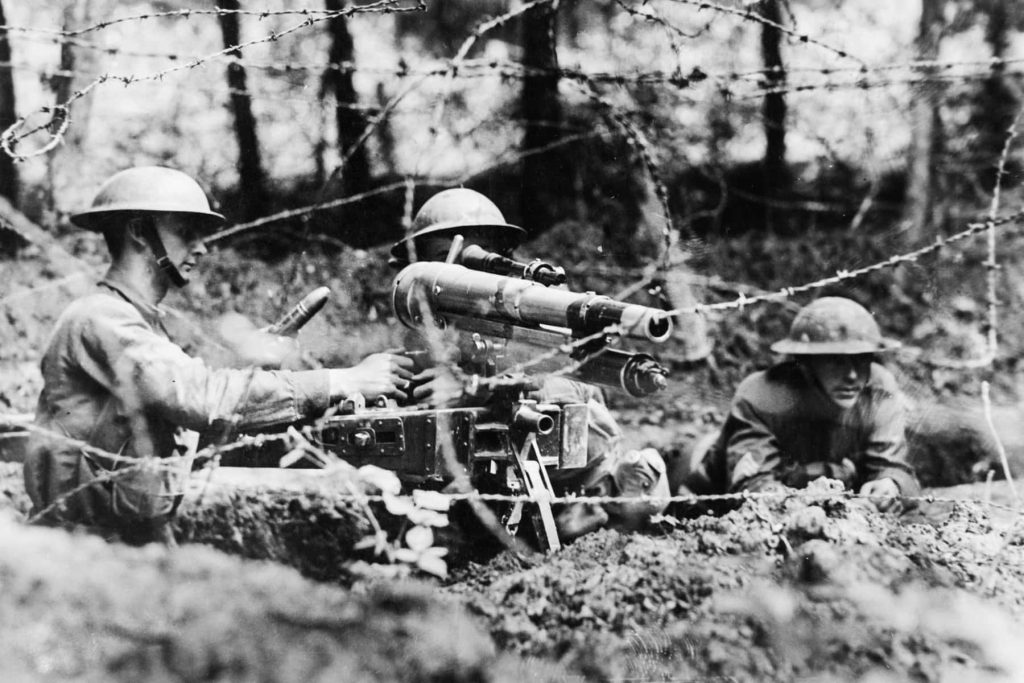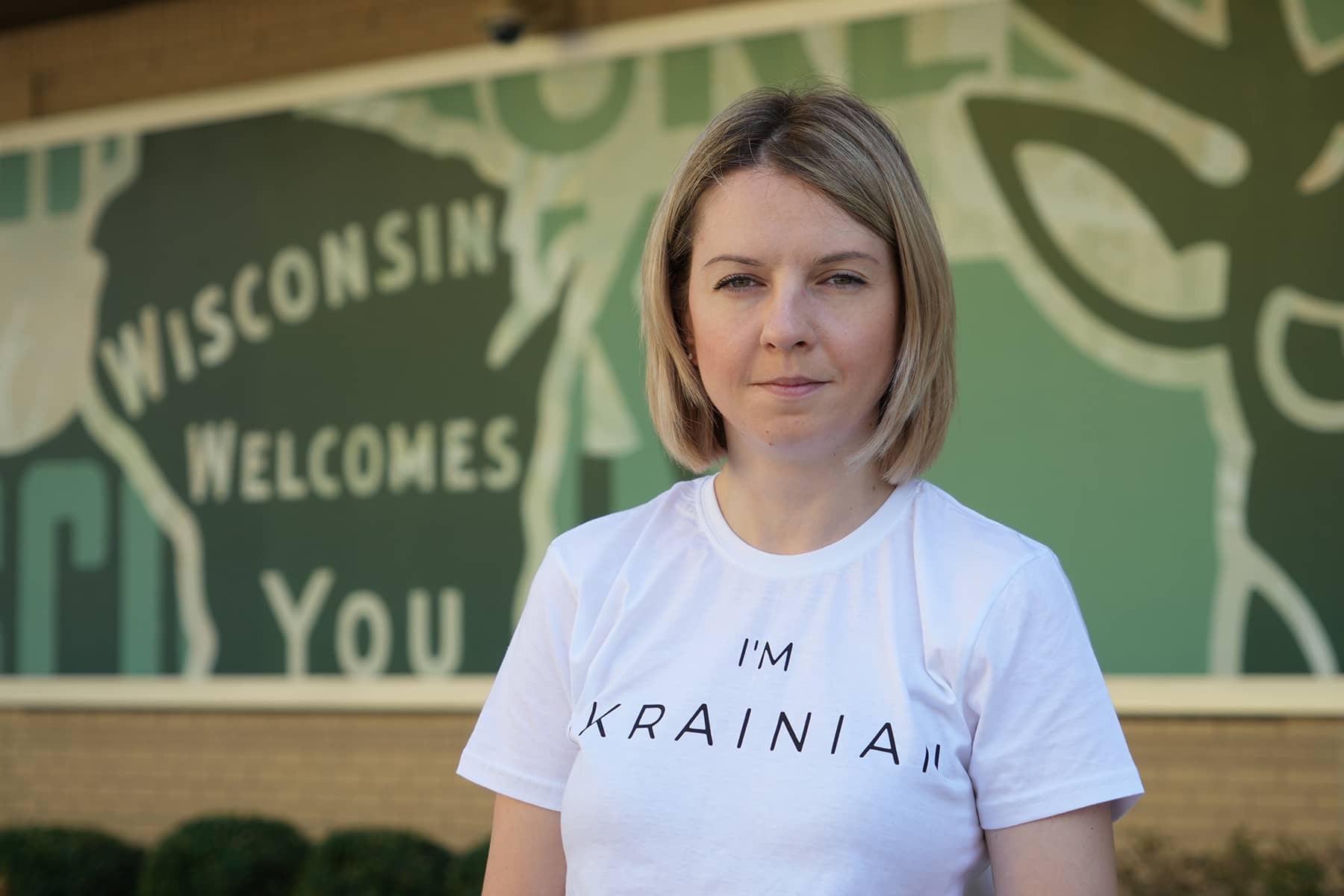
For my assignment as a war correspondent in Ukraine I had the privilege to work with Yaroslav, who was my videographer and also provided security for my team. Near the end of my work, I had the chance to visit his hometown of Berezhany near the Polish border. I had a meal with his family and fell in love with smetana, which is a type of Ukrainian sour cream. His wife Nataliia made it fresh, and I originally thought it was a soft cheese sauce. As we ate, we talked about a future when the family might have to flee to America to escape the war. That future arrived for some of them on July 20.
Since President Volodymyr Zelenskiy declared martial law at the start of Russia’s invasion on February 24, Ukrainian men aged 18 to 60 were eligible for military service and restricted from leaving the country, with few exceptions.
The policy meant that Yaroslav could not yet leave Ukraine, but Nataliia and their two children could. After much consideration, and hardship over their separation, the approaching school year was a deciding factor for their decision. Nataliia would bring their kids to America while Yaroslav stayed behind.
Two months after we met in Ukraine, I caught up with Nataliia in Milwaukee.
“I came to Milwaukee with my children to escape the war. We wanted them to be somewhere that bombs were not flying over their heads,” Nataliia explained, from her sister-in-law’s quiet home in the suburbs.
President Joe Biden announced “Uniting for Ukraine” on April 21, 2022. The program was created to offer Ukrainian nationals who fled their country, following Putin’s brutal invasion, a chance to come to the United States under “humanitarian parole.”
The program also required the support of a sponsor in America. Because Yaroslav’s sister lived in Milwaukee, the process to bring them over went relatively quick once they made the decision to leave.
“In the beginning, the ‘Uniting for Ukraine’ process was kind of hard. It took a whole month to get all the papers and verifications back. But now they made it so much easier that it didn’t take too long. For us, it was actually an easy process,” said Nataliia.
She remained hopeful that restrictions in Ukraine would ease and Yaroslav could join them before long in Milwaukee. But until then, their kids needed to start school in the fall. And even though school buildings in Berezhany were not destroyed by Russian artillery like those in Milwaukee’s Sister City of Irpin, getting access to education was still a daunting challenge.
“Even though where we live in Berezhany was not close to the fighting, the kids still suffered. They lost the ability to have any social life with friends, because communications were pretty much impossible. You cannot let them go outside to play because there are sirens, and we have to go into shelter daily for possible airstrikes,” said Nataliia. “Sometimes there are sirens for four hours straight. And most of our shelters are not real bomb shelters, just a cold storage cellar with a dirt floor.”
Nataliia said that most the alerts for airstrikes came at night, so the sirens would blare between 2:00 am and 4:00 am. The nightly tactic of terror was part of the Russian’s psychological war against Ukraine’s civilian population, which specifically targeted families and children. Living on the fifth floor of her residential building with no elevator, it was not a quick drill for Nataliia and her children to seek safety each night.
“During COVID, at least we had online learning. But with the war, ten million Ukrainians have had to flee for safety. Even where teachers have stayed behind, it is still not possible to be online for classes. When families have to escape to a bomb shelter, we are often behind a couple thick walls for blast protection. WiFi cannot reach us. There are also no electrical outlets to keep laptops or mobile devices powered for so long,” said Nataliia.
August 24 marks six months since the full-scale Russian invasion of Ukraine, that sought and failed to capture the capital city of Kyiv. But the Russo-Ukrainian War was previously started by Russia in February 2014, following the Ukrainian Revolution of Dignity, which culminated in the ousting of pro-Russian President Viktor Yanukovych.
Russia had focused the first eight years of the conflict on the annexation of Crimea and the war in Donbas. The rest of Ukraine had been able to return to an illusion of normality, which finally shattered with the invasion to seize the entire independent nation.
“For many years the war was in and out of our thoughts. Humans can get used to many conditions, and being at war just became normal,” said Nataliia. “So there were always people dying, friends who we lost or people we knew who were killed in the war. But the invasion really brought the full scale of the war to all of Ukraine, and no one was safe anywhere.”
When the invasion did come, many people were still caught unprepared. There massive crowds waited at pharmacies and grocery stores for provisions.
“In Berezhany, there were long lines of vehicles all the way to the border. Our streets were full of cars. People were traveling from the Eastern parts of Ukraine, and they had to pass through our town to reach Poland,” said Nataliia. “Usually our streets are fairly empty. But for a long time we had terrible traffic and congestion as people tried to escape.”
Nataliia has yet to experience the culture shock of moving to America, because she is still only newly arrived and it feels like a vacation with relatives in a home environment. But that is slowly changing as her kids take school placement tests, and necessity pulls her deeper into the local Milwaukee community.
Once her kids are settled in school, then Nataliia said she could think about going back to work. But that is not even an option for while, since it can take the United States government up to six months to issue her a work permit.
Until then, Nataliia remains hopeful that Yaroslav can join them soon, and thankful that her children can finally sleep in a bed each night without interruption by the traumas of Putin’s unprovoked invasion.
“I want Americans to know that the war is not over. And actually, it is thanks to the American people that the lighting invasion expected to last a few days has stretched on for a few months. Russia did not quickly crush our country. We remain independent. And America has been providing the help we need to defend ourselves. So, the war continues,” added Nataliia. “But each day we hold onto our freedom comes with a cost. We all continue to pay a price, either with our lives or the quality of our life.”
Lee Matz
- Reports from Ukraine: Traveling from Milwaukee to a country at war just to take a vacation from America
- Images from Ukraine: Latino artist travels to Irpin to paint mural inspired by “Echoes of Guernica”
- Images from Ukraine: Irpin residents welcome reissue of Russian Warship Stamp as latest sign of victory
- Stories from Ukraine: Wandering in the ruins of a shattered life after surviving Russia’s invasion
- Images from Ukraine: Similar to the Alamo, martyred cities bought precious time to save a nation
- Stories from Ukraine: Tent camp offers shelter for displaced residents until Irpin can rebuild lost homes
- Images from Ukraine: Graveyards of Russian war machines show the scale of Putin’s failure to seize Kyiv
- Images from Ukraine: Following the invasion convoy’s 40-mile route and exploring an abandoned base
- Stories from Ukraine: Illegal weapons and proof of Russian War Crimes easily seen along streets of Irpin
- Images from Ukraine: How Irpin’s cemetery processed the staggering massacre of its local citizens
- Stories from Ukraine: Healing remains slow as Borodyanka residents recover from occupation
- Images from Ukraine: The deep scars of war remain visibly etched across the landscape of Borodyanka
- Interview with Oleksandr Markushin: Mayor of Irpin and the hero of a Hero City
- A Meeting of Sister Cities: Former and current Mayors of Irpin ask Milwauke’s business community for help
- Stories from Ukraine: Having a shared purpose helped Irpin’s leaders protect the city and stop the invaders
- Stories from Ukraine: How Milwaukee helped a bakery feed hungry survivors in Bucha with fresh bread
- Stories from Ukraine: Bucha resident recalls how Russians turned neighborhood into a street of death
- Stories from Ukraine: How a mass grave of executions overshadowed accountability from Bucha’s leadership
- Images from Ukraine: Putin’s attack on Babyn Yar is a painful reminder of the broken vow of “Never Again”
- Images from Ukraine: An unexpected encounter with Jewish history and the bloody legacy of persecution
- Images from Ukraine: Listening to timeless voices of ethnic heritage etched in stone at Lychakiv Cemetery
- Images from Ukraine: The experience of attending a military funeral in Kyiv while children died in Uvalde
- Images from Ukraine: Stepping out of the fog of war to see the beauty of faith in ancient places of worship
- Images from Ukraine: The cities of Kyiv and Lviv were divided by history but remain united in identity
- Stories from Ukraine: Anya Nakonechna shares why the Lviv Opera is a symbol of her nation’s culture
- Images from Ukraine: A folk village where visitors can experience the life of past generations
- Images from Ukraine: Signs of renewal sprout from under Irpin’s rubble as city looks to the future

